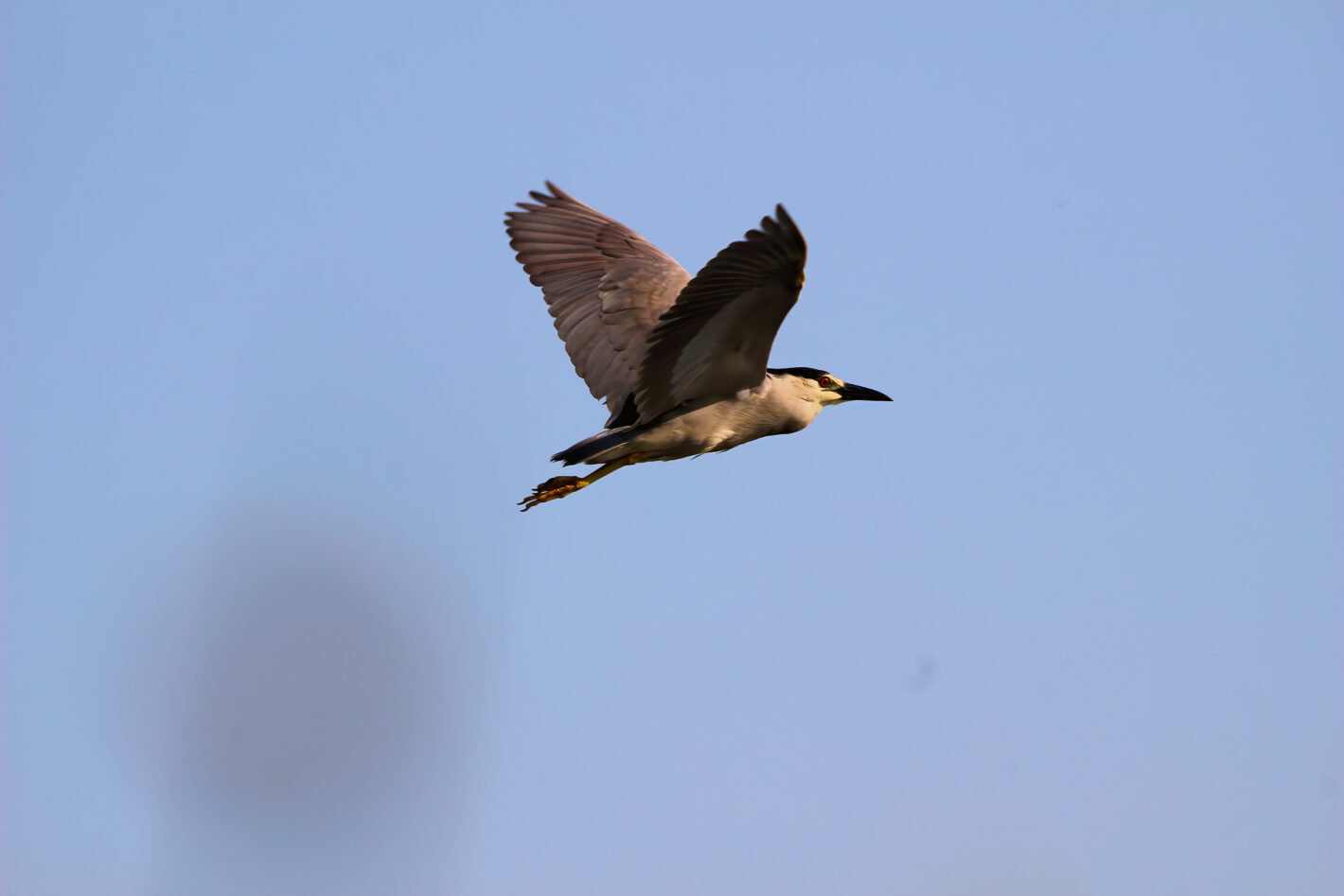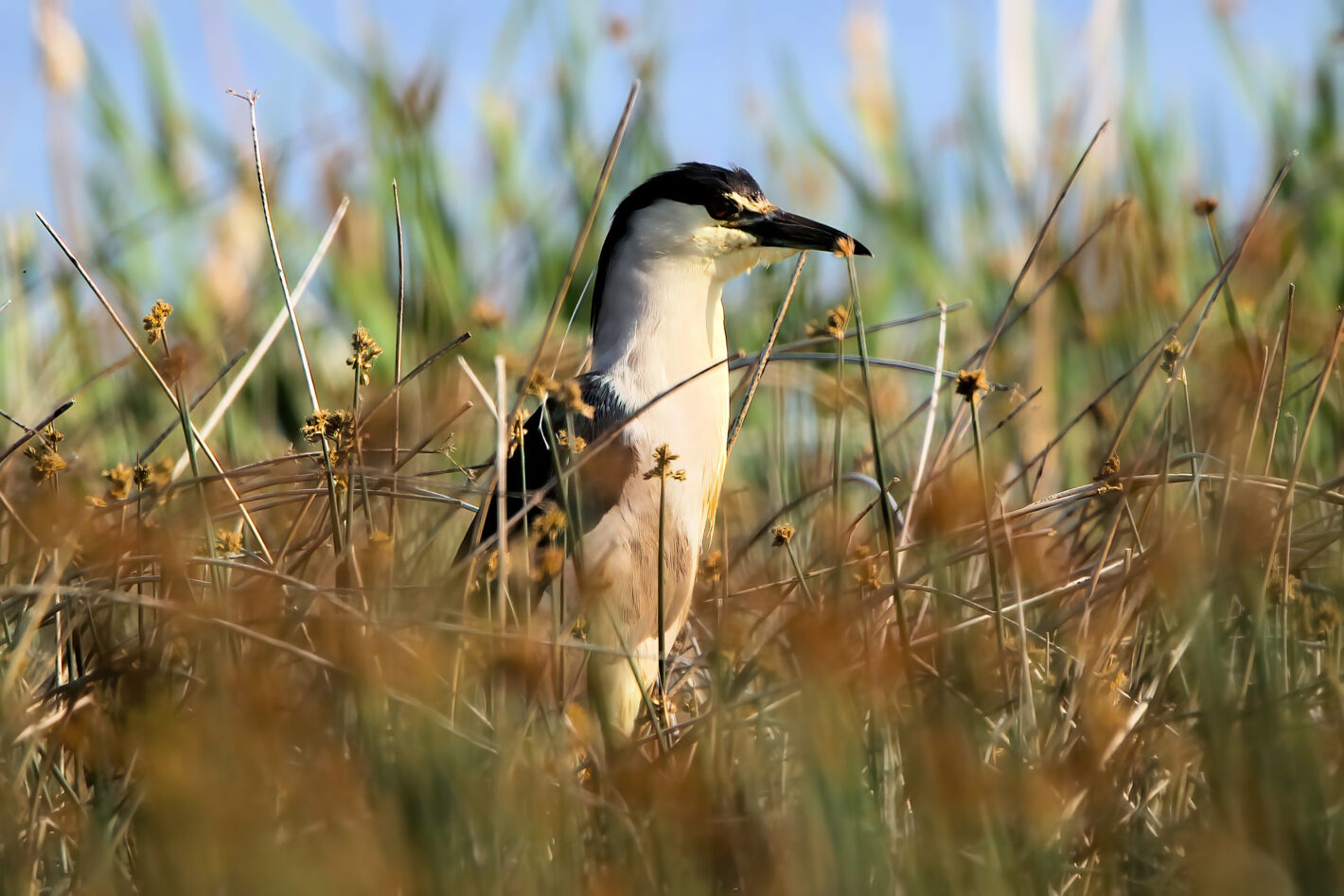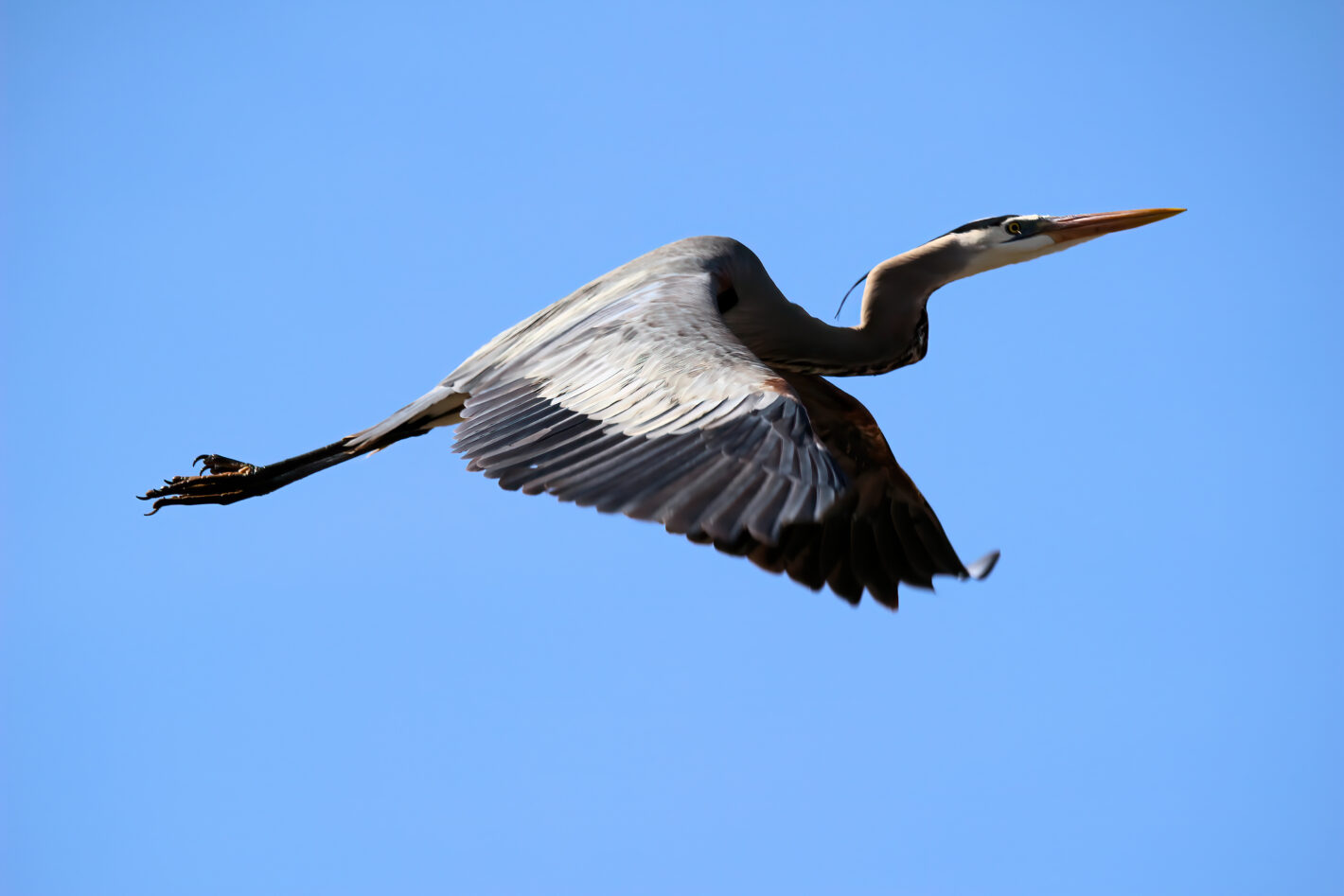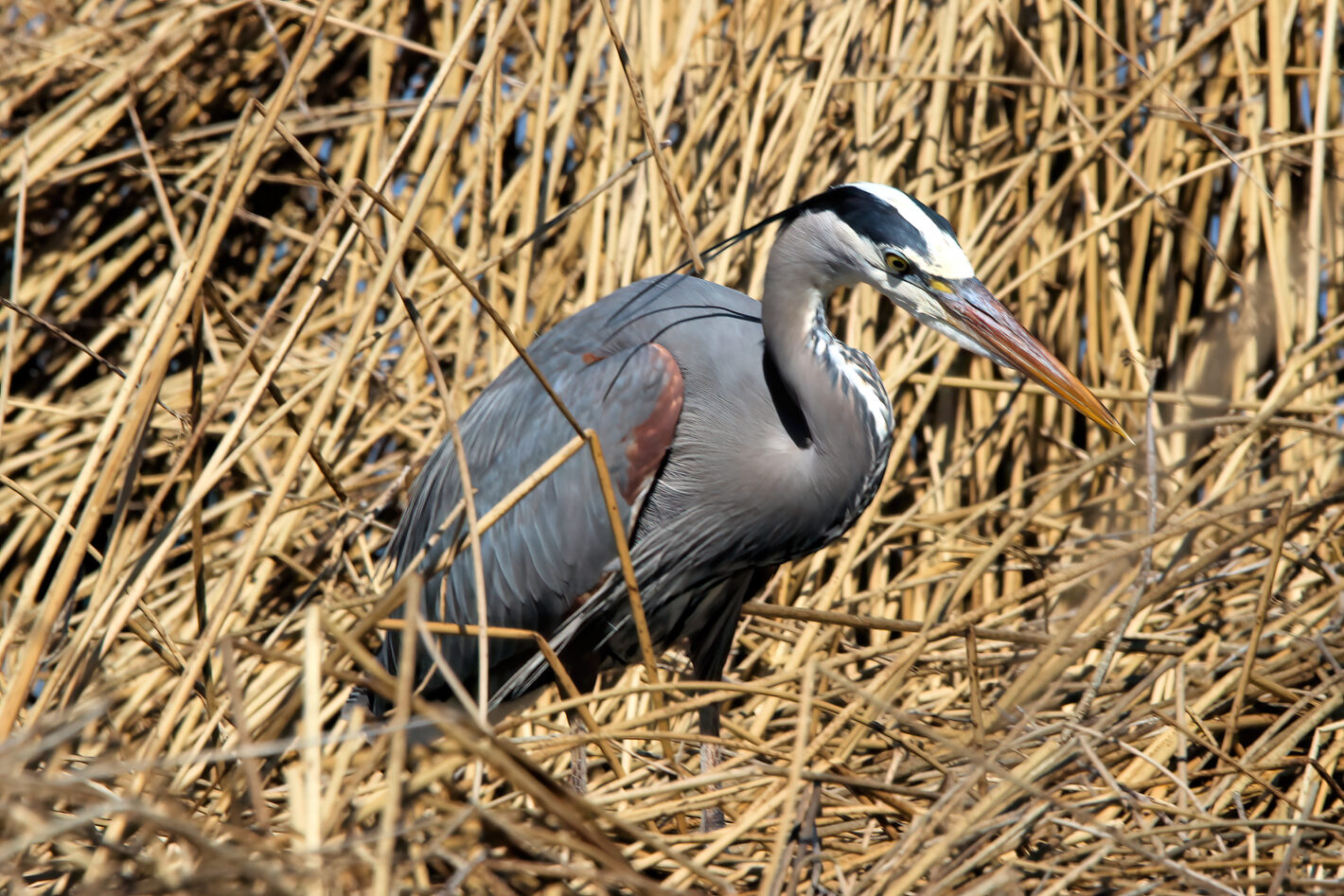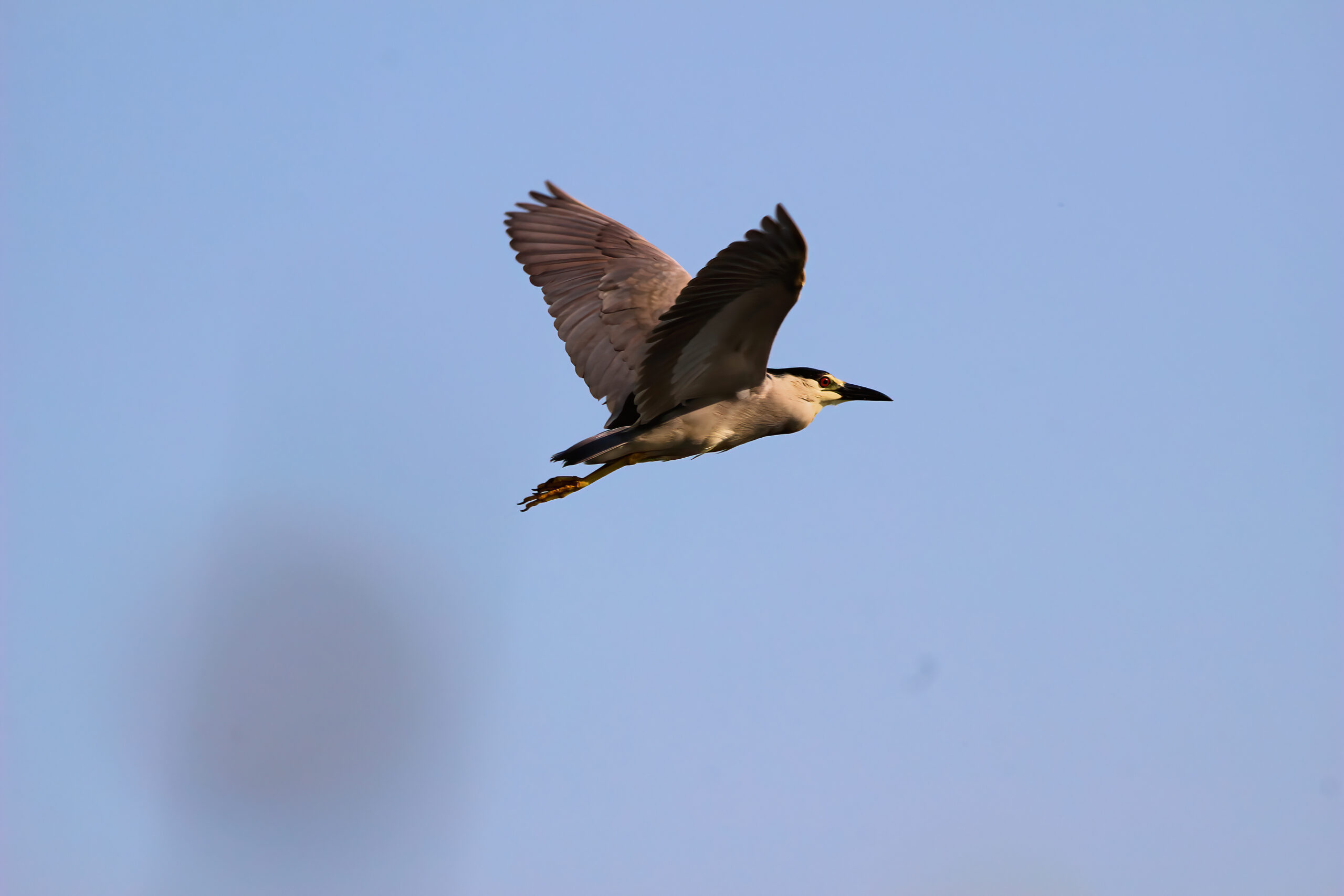Appearing awkward during takeoff and landing, uttering guttural sounds infrequently and certainly unique in appearance, Alberta’s most common heron species captivate our imagination. Stealthy hunters and graceful flyers exhibiting effortless power, the Great Blue Heron and the Black-crowned Night Heron are two of nature’s feathered marvels.
In a late June trip to Frank Lake, located east of High River and arriving just after sunrise, we were treated to the “flight of the herons”. Popping out of the various bulrush and reed beds, both heron species freed themselves from gravity by leaning forward slightly and leaping into the air. With a flap of their wings, the herons head skyward. As we watched each heron, it became apparent that most of the dozen or so flying herons were circling about specific areas of bulrushes, each in flight for less than a minute, only to land again. Although both heron species do nest in colonies and mainly in trees, finding a tree around the north end of Frank Lake is like having a Canadian-based NHL team win the Stanley Cup. We believe the Black-crowned Night herons may be nesting in safe locations deep within the plentiful cattail beds. This may be the case for the Great Blue herons as well, but we have noticed some of the lake arrivals coming flying from the High River area, where there is a tree-nesting colony along the High River.
Although most people are familiar with the Great Blue heron, identifying the Black-crowned Night Heron is not difficult. This species, with a body size between that of a crow and a goose, sports short legs and is thick-bodied. Blessed with a thick neck, a large flat noggin, tipped with a heavy, pointed black bill, it’s hard not to notice the red coloured eyes. Adults are mainly a light grey, with a well defined black back and crown. Juveniles are essentially brown, have large white spots on the wings with a black and yellow bill.
With both species in close proximity, literally landing a few metres from one another, feeding times are different for these two heron species. The Black-crowned feeds during the evening up to sunrise, while the Great Blue herons feed during the day, deftly avoiding competition for the items in their diets that are quite similar. In watching the Great Blue herons land, its landing gear and approach reminded me of the challenge of landing an F-14 Tomcat on an aircraft carrier in windy conditions in a great action movie.
From a cultural perspective, both herons are have had specific meanings in a number of ancient and indigenous societies. In ancient Egypt the night heron was closely associated with the god Thoth, the god of wisdom, writing and magic. In North American indigenous cultures, both herons are seen as symbols of renewal, rejuvenation and rebirth. In the Buddhist faith and culture, the heron symbolizes beauty, transformation and the wisdom of the Buddha.
For us, the herons with their unique appearance are a part of the diverse wildfowl and shorebird populations that make Frank Lake an Important Bird Area (IBA) in our province. If you are looking for the heron apparent, a journey to Frank Lake is certainly worthwhile.
